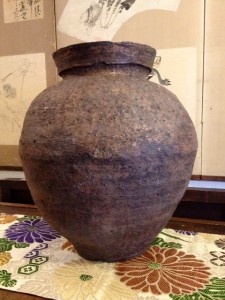Japanese pottery (yakimono), for centuries both beautiful and exquisite, is generally categorized in 4 groups:
1. Unglazed earthenware: This product is made of clay and fired at a relatively low heat, about 800 degrees, centigrade. The best known includes the ancient, famous Joumon Douki and Yayoi Douki.
2. Unglazed stoneware: Here, colored clay is fired at high heat, about 1200 degree, centigrade. The high flame with natural ash glaze deposits creates a unique pattern. The best are represented by Shigaraki, Bizen, Tanba, Tokoname, and Echizen.
3. Glazed pottery: Another ceramic made at high heat, this clay pottery is fired at about 1200 degree and is complemented by unique glazes and earth-like texture. The most famous include Shino, Raku, Mashiko, Seto, Mino, Hagi, and Karatsu.
4. Porcelain: Made from varying mixtures, porcelain typically contains clay, or Kaolin, silica-quartz, feldspar, and varieties of stone; it is unique in that it is fired at extremely high heat, approximately 1300  degrees. More well-known areas of origin are Arita, Kiyomizu, and Kutani.
degrees. More well-known areas of origin are Arita, Kiyomizu, and Kutani.
